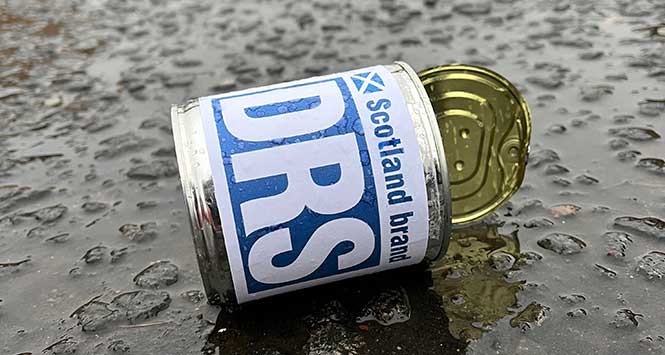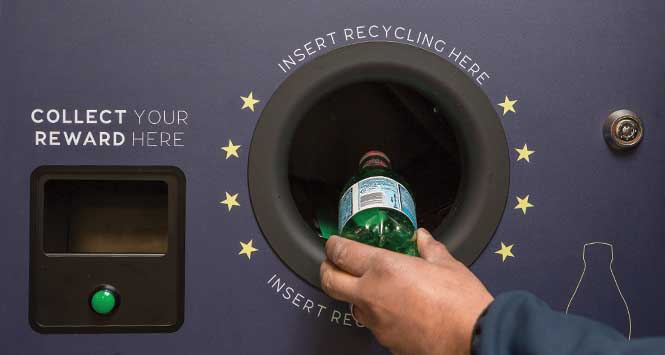It’s been a rocky road for Scotland’s proposed Deposit Return Scheme with the latest decision seeing the implementation pushed back until 2023.
By Antony Begley
The long and winding history of Scotland’s ground-breaking Deposit Return Scheme (DRS) from concept to implementation been, at best, fairly shambolic. Granted, Covid-19 didn’t help, but it’s been a rollercoaster of a ride from the days when most of the industry, including many high profile drinks producers, trade bodies and retailers, initially fought tooth and nail against the very idea of a deposit return scheme.
A lot of u-turns later and DRS is now generally accepted as being A Good Thing, which explains the indignant uproar recently when the Scottish Government announced that the actual implementation will now take place in August next year, rather than July this year.
Only a cynic would suggest that the Scottish Government waited until the Glasgow-hosted COP 26 conference was over and the dust had settled before announcing that one of biggest sustainability projects ever undertaken in Scotland would be pushed back by more than a year.
It has been obvious for a very long time that the infrastructure to support a fully-fledged DRS could never be in place for the July deadline – so it begs the question why did it take the government so long to confirm the postponement? Did COP 26 come into that decision? After all, the government would have faced global derision for cancelling a sustainability programme of this scale just before hosting the world’s largest sustainability conference.
So, the cynic would assume that industry is left once again picking up the real-world pieces and footing the bill for a politically-driven decision.
Let’s not forget that vast sums of money have already been spent by countless businesses who had no choice but to prepare for the implementation of DRS in July, knowing all the while that there wasn’t the slightest chance that DRS would actually be implemented in July. And where does the decision leave us all now?
Stating the obvious
The Scottish Government’s announcement of the new August 2023 date predictably implicated the Covid crisis as being the main driver behind the delay. Which is true as far as it goes. What’s wrong with the whole thing is the timing. They must have known for a very long time that this decision was coming – so why let the industry labour under the misapprehension that DRS would go live in 2022?
The official Scottish Government statement also adds new layers of fog: there will be a “phased implementation of the scheme” with a “target of achieving 90% collection rates by 2024”. The government “is working with retailers on a voluntary basis to enable people to start returning their bottles and cans for recycling from November 2022”.
If it’s clarity and strong guidance you’re looking for, jog on.
Note too that the government has piled more pressure on the industry by foreshortening its timeframes once DRS is actually up and running. The legal requirement to collect at least 90% of eligible containers must now be met in the second year of operation, not the third. This means the scheme will still be expected to meet its original target of achieving 90% collection rates by 2024 – but the industry will have a year less to achieve that goal for the government.
Stating what has long been glaringly obvious to everyone else, Circular Economy Minister Lorna Slater said: “Implementing a scheme on this scale is a massive national undertaking involving tens of thousands of producers and retailers. Given the challenges that the pandemic and Brexit have placed upon these businesses, it is disappointing – but understandable – that the independent review concluded the original start date was no longer feasible.”
Heated reaction
Unsurprisingly, the response to the delay announcement was fairly lively. The NFRN initially accused the Scottish government of “bottling” a decision and reiterated the importance of getting a scheme that works for all retailers – large and small – as well as achieving its aim of increasing the availability of high-quality recycled plastic, metal and glass and decreasing the number of these items being discarded as litter.
Scottish Grocers’ Federation Head of Public Affairs John Lee took a slightly more placatory tone, saying: “The Scottish Government has recognised the reality of the challenges facing convenience retailers and we welcome the delay of the implementation date until August 2023. However, we are concerned about the Minister’s statement that retailers will begin to roll out a phased approach to DRS in the summer of 2022. We need urgent clarity on what this will involve, how the Scottish government will support it and what the objectives of this approach will be. Overall, the successful implementation of DRS is the biggest challenge the convenience retail industry has ever faced.”
In his customary polite but forceful style, Association of Convenience Store Chief Executive James Lowman says: “We welcome the clarification of the timelines for the introduction of a DRS in Scotland which will allow more time to design and implement a scheme that will be workable and effective for both businesses and consumers. This is still a tight timescale and we all have to commit to working at pace over the next 20 months.
“There are still a number of important decisions to be made around handling fees as well as addressing key operational issues around manual handling and the handling of glass bottles. We will continue to engage with the Scottish Government and Circularity Scotland ahead of implementation to communicate the key priorities of our sector.”
It looks more than likely that there will be a few more twists and turns in the road before Scotland’s Deposit Return Scheme finally sees the light of day.







